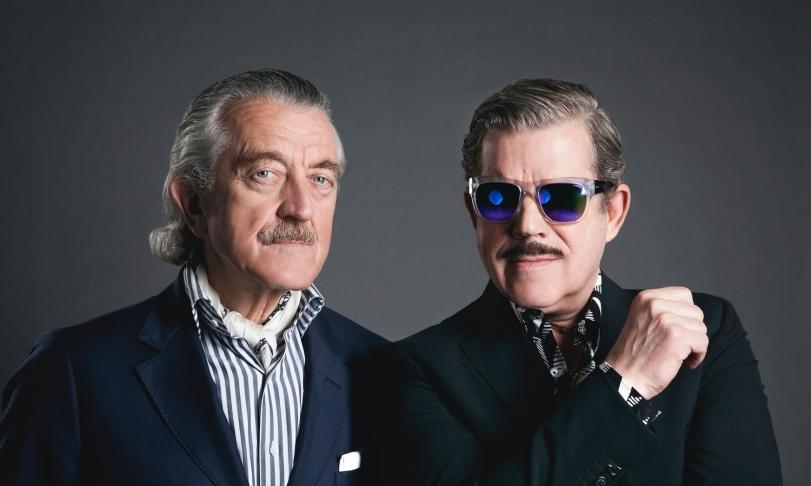
With their music, which is close to Dadaism, the Swiss band Yellow emphatically shaped the world of electronic music beginning in the eighties and, albeit more accidentally than intentionally, paved the way for Techno. Even though their presence diminished significantly in the nineties, Yello never fully withdrew from the scene. With her new album Point, Yello is back once again.
In the late 1970s, Boris Blank and Carlos Perón met in a test laboratory for cars to record engine sounds. They got talking and began to experiment with various devices, recording the sounds and processing them into songs. While searching for a suitable accompanying voice, the two met Dieter Meier, who at that time was still and extremely successfully active as a singer in a band called The Assholes. In 1979 the first maxi-single was released on a Swiss underground label and in 1980 their way led them to the USA to present their music to various record companies, returning to Switzerland with a record deal. The first albums Solid Pleasure and Claro que si followed. Carlos Perón left the band in 1983 after completing the album You Gotta Say Yes To Another Excess. Since then, Yello is basically a two-man show whose products would not be possible without extreme computer support, and who have presented their albums here and there together with guests. Boris Blank was now solely responsible for music and production, Dieter Meier limited himself then as now to contributing his voice.
In the mid-1980s, the band became better known through first chart successes, especially in their home country of Switzerland and in Germany. The album Stella, released at the beginning of 1985, stayed in the charts in Germany for 34 weeks (highest position 6th place) and was awarded a golden record. In Switzerland Stella reached the 1st place. The following best-of-album 1980-1985, The New Mix In One Go, also received gold in both countries. The next studio album One Second (1987) was similarly successful with its three single releases, including The Rhythm Divine with Shirley Bassey.
Yellow's breakthrough in Germany came in 1988 with the single The Race, which was used on German television as the title track for the popular music video show Formula One and climbed to 4th place in the charts. From 1997 to 2003, Yello released three more studio albums, each without any noteworthy success in the single charts. In 2009 the album Touch Yello was released, featuring German jazz trumpeter Till Brönner, Swiss singer Heidi Happy and recorder player and professor at the Mozarteum Salzburg Dorothee Oberlinger as guest musicians. With first place and a golden record, Yello was able to continue their old successes with this album, at least in Switzerland. In Germany it was enough for 20th place, and the album Yello by Yello - The Singles Collection 1980-2010, released at the end of 2010, also sold well.
The current album, Point, the fourteenth studio album by Yello, whose two band members have meanwhile almost or over 70 years of life behind them, has all the characteristic features of the Dada band and recalls numerous motifs from earlier albums. With its pulsating rhythm and bass sax riff, "Waba Duba" is reminiscent of the Yello hit "The Race". "Way Down" presents itself as a deep synthesizer dub with reminiscences from Blade Runner. "Out of Sight" is reminiscent of the Yellow-Hit "Bostisch" with vocal contributions based on melodies that rush down on the listener almost as hastily as in the original.
So, Point continues the Yellow Story, which seems to never end, without offering anything new. However, the new album is clearly superior to previous releases in terms of sound. Yellow fans will get their money's worth just as much as newcomers to the Dada world of Yello.






